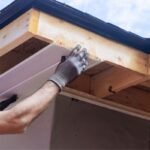A fire curtain, which is simply a strong piece of fire-resistant material, is suspended discreetly from a ceiling, lobby, or doorway until it is removed when the smoke alarm or fire alarm in a building is activated. The curtain acts as a barrier between the fire, and escape routes that the building’s occupants will use in an emergency evacuation. It is essential for the prevention or compartmentation of flames spreading vertically or laterally, putting lives at greater risk. A1S Group is a trusted manufacturer, supplier, and installer of industrial shutters, smoke and fire curtain, shutters, as well as smoke and fire shutters. We have trusted partners throughout the UK as well as internationally, and we can install our products across the United Kingdom.
Fire curtains are an integral part of any building’s safety system. They can be placed in many areas of a building, which is a major benefit. Fire curtains can be used to replace non-load bearing walls and fire rated glazing. This allows open plan buildings to comply with the applicable regulations. Vertical curtains can also be used to protect elevators and lobbies from smoke and flames.
Fire curtains in action
A fire curtain is vital in the separation of occupied areas and evacuation areas from the fire. However, there are some drawbacks to it. These should be taken into consideration from the beginning.
One limitation is that the curtain can be deployed once the fire has started. This can make it difficult to determine if people are trapped in an area at highest risk.
- Avoid putting curtains up too soon to prevent damage from site work.
- Rollers should be perfectly horizontal to avoid curtain fabric drifting.
- Do not complete commissioning before the final power switch is turned on.
- Before you make the curtain, measure the height of the curtain from the ground.
- Make sure the curtain’s space is blocked with temperature/fire-rated materials that have the same rating as the curtain. These should be fire-rated or have dampers if they pass above the curtain.
- Double-check that the supply system is powered by two sources.
- Make sure that curtains do not have too many gaps. The maximum gap is specified in EN12101-1.
- Make sure the bottom bar of your curtain fits the ceiling in which it is to be installed.Ceilings made of Gypsum can have subtle imperfections. A straight bottom bar will not work well with these ceilings.
- Also, uneven floors can also be caused by fire curtains. Make sure the curtains can compensate for uneven floors when you use them to stop the spread of fire.






